Petals to the Metal
Celebrate a blooming New Year with a look back at the Rose Parade's history through NHM's Seaver Center collections.
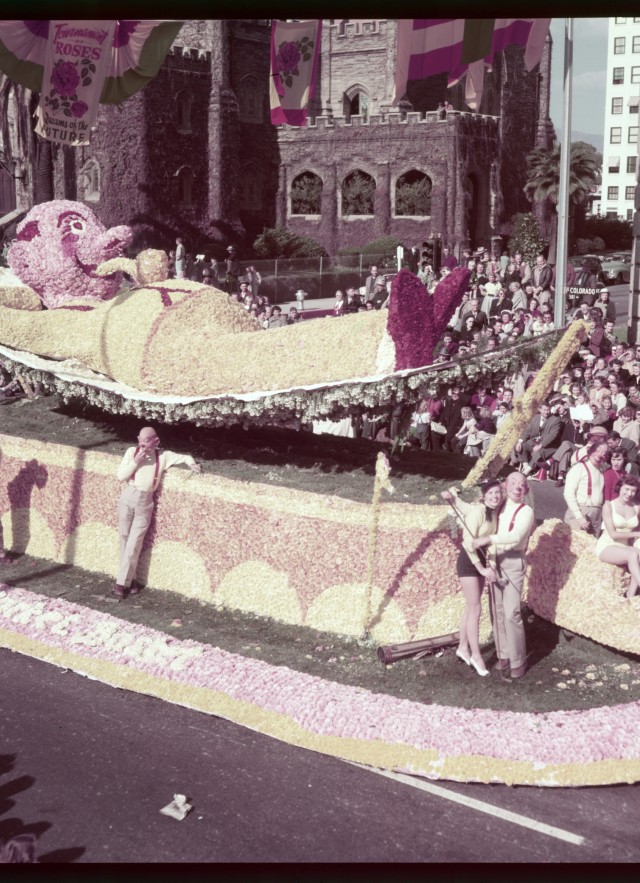
Published December 9, 2022
The Seaver Center for Western History Research is the two-dimensional and flat objects collection area of the Natural History Museum of Los Angeles County's History Department. It is a treasure trove of pamphlets, posters, prints, and photos capturing the history of the trans-Mississippi West, especially Southern California and L.A., including a certain SoCal New Year's staple.
The Rose Parade has deep roots in Southern California history and is maybe one of the longest-running flexes of any region of the United States.
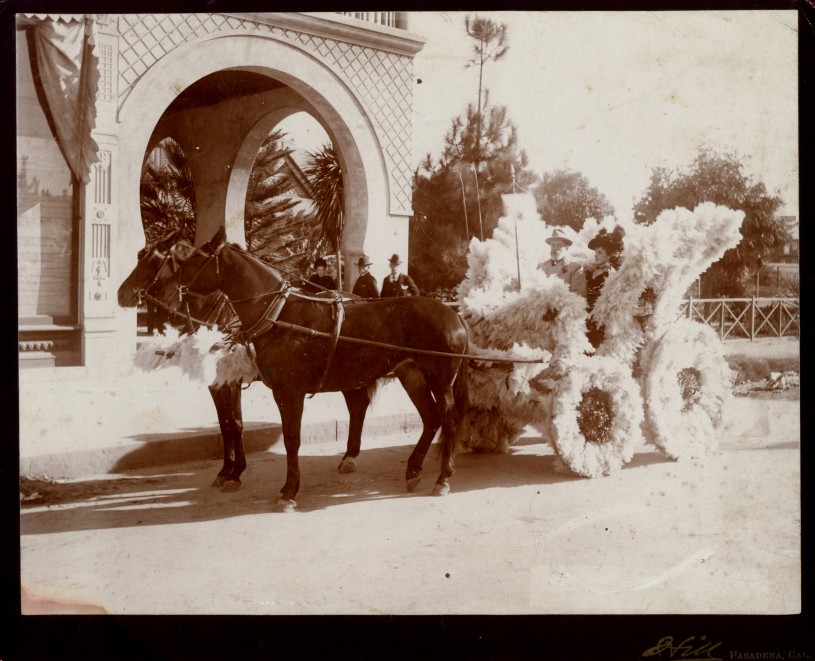
Beginning in 1890, Pasadena's exclusive Valley Hunt Club wanted to show off Southern California's Mediterranean climate to the folks slogging through snowy winters back home. Horse-drawn carriages covered in flowers cut from club members' home gardens were the original floats.
"In New York, people are buried in the snow. Here our flowers are blooming and our oranges are about to bear. Let's hold a festival to tell the world about our paradise."
Professor Charles F. Holder, Valley Hunt Club Member
The club flaunted SoCal's natural bounty with flower-festooned carriages, leading club member Professor Charles F. Holder to call the event a "Tournament of Roses." It's been held almost without pause ever since on January 1 (or 2, if New Year's falls on a Sunday, so as not to disturb church services). The event quickly outgrew the Valley Hunt Club, and 1895 saw the founding of the Pasadena Tournament of Roses Association to manage the parade and growing crowds.

The early parade was followed by everything from jousting, tug-of-war, chariot races, polo played on burro back, and an elaborate race where contestants had to put 50 oranges in a basket one by one. By 1916, they decided to just have a football game, and it's been the Rose Bowl ever since.
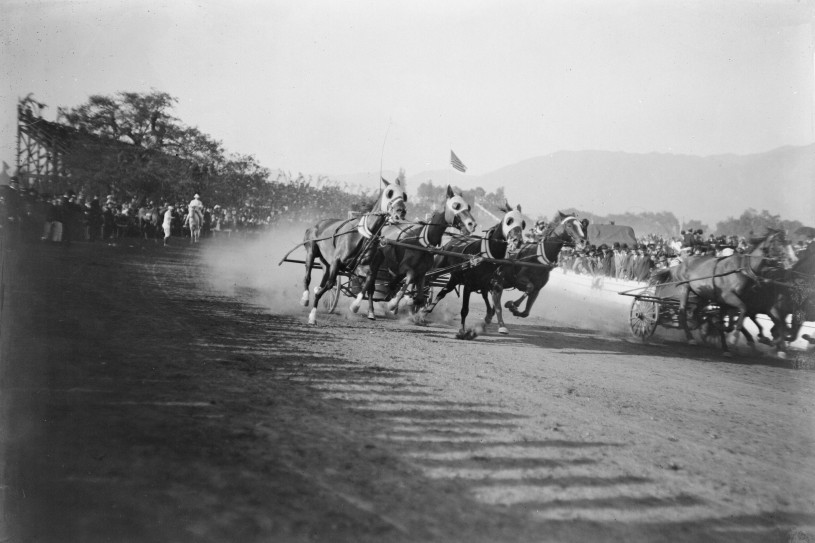
As they faded from city streets, horse-drawn carriages became less common vehicles for the floral creations of the parade, making their exit completely by the time the 31st Tournament took place in 1927. Floats would be electric or gas-powered going forward.
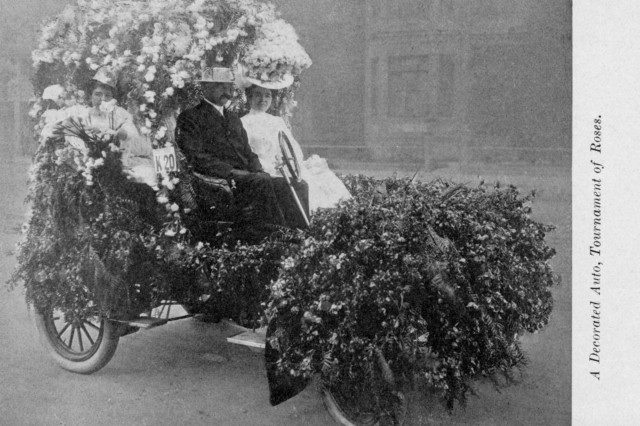
Image courtesy of the Seaver Center for Western History Research
Postcards of flower-covered automobiles like this helped spread the word about the growing New Year's tradition.

Image courtesy of the Seaver Center for Western History Research
A colorized postcard from the early days of the motorized Rose Parade
1 of 1
Postcards of flower-covered automobiles like this helped spread the word about the growing New Year's tradition.
Image courtesy of the Seaver Center for Western History Research
A colorized postcard from the early days of the motorized Rose Parade
Image courtesy of the Seaver Center for Western History Research
The 20th century brought along another modern innovation starting in 1918: themes. Given the recently ended World War, the inaugural theme was "Patriotism" (followed by "Victory Tournament" and an eight-year hiatus in themes).
When they picked up again, themes were mostly aspirational and a little repetitive, especially at first: 1927, "Songs in Flowers"; 1928 "States & Nations in Flowers"–appropriate when you're primarily working in flowers.
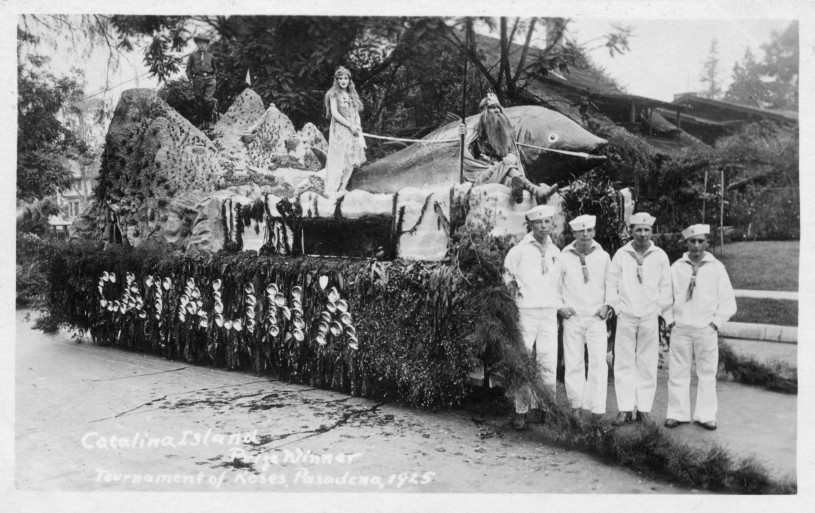
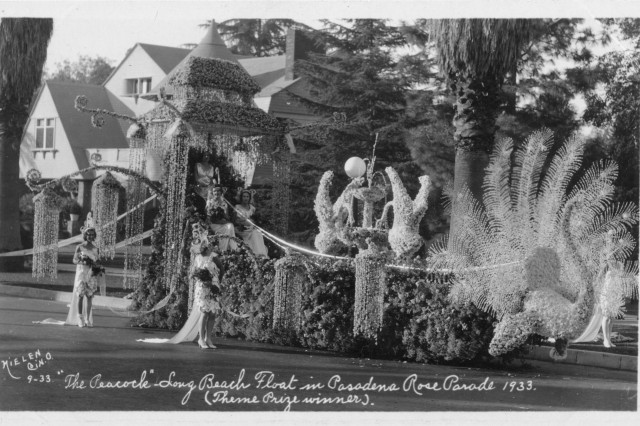
Image courtesy of the Seaver Center for Western History Research
This 1933 entry from Long Beach exemplifies float designer's genius for making a scene, earning this float the Theme Prize. That year's theme: "Fairy Tales in Flowers."
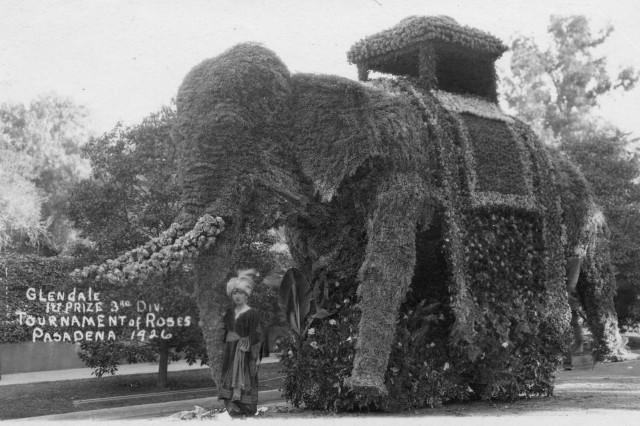
Image courtesy of the Seaver Center for Western History Research
A 1926 float from Glendale impresses with its life-sized representation of an elephant
1 of 1
This 1933 entry from Long Beach exemplifies float designer's genius for making a scene, earning this float the Theme Prize. That year's theme: "Fairy Tales in Flowers."
Image courtesy of the Seaver Center for Western History Research
A 1926 float from Glendale impresses with its life-sized representation of an elephant
Image courtesy of the Seaver Center for Western History Research
The evolution of floats from flower-covered cars to more elaborate, plant-based wonders was well underway by the 1920s and continued into the 1950s as the Tournament of Roses continued to grow, attracting eyeballs, larger businesses, and future Californians to the booming post-war West Coast.
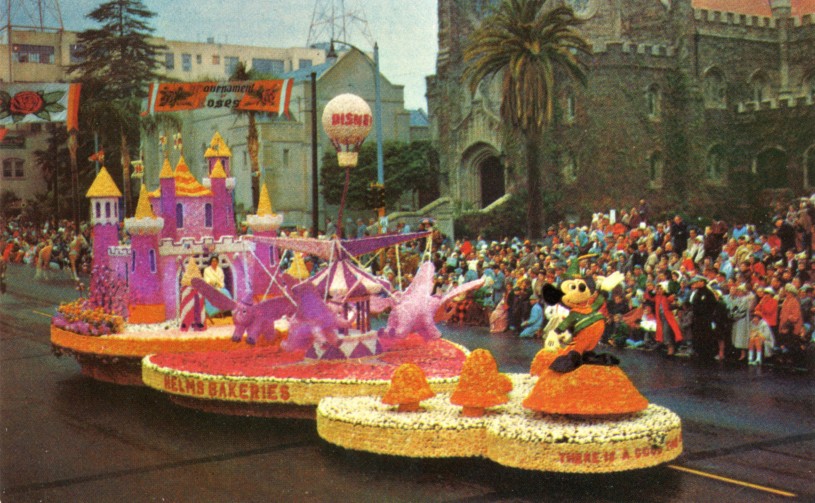
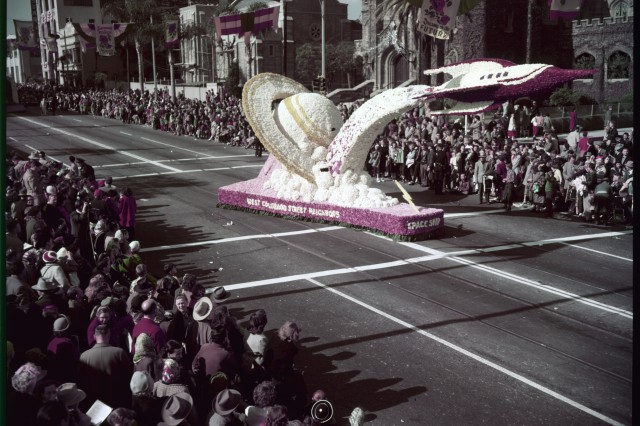
Image courtesy of the Seaver Center for Western History Research
Floats of rockets and space travel became more common, reflecting the technological optimism of the Atomic Age and Southern California's booming aerospace industries.
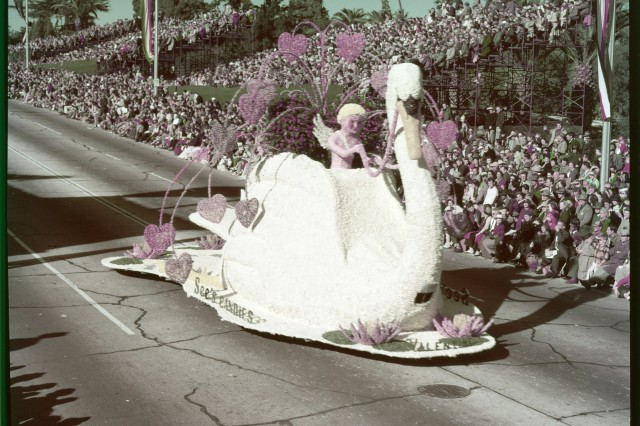
Image courtesy of the Seaver Center for Western History Research
Local businesses like See's Candies continued to use imaginative floats like the above to bring their brands to larger audiences. Mary See's Pasadena home is just a few blocks from the parade route.

Image courtesy of the Seaver Center for Western History Research
Floats like this one from Seal Beach continued to portray different aspects of the California Dream.
1 of 1
Floats of rockets and space travel became more common, reflecting the technological optimism of the Atomic Age and Southern California's booming aerospace industries.
Image courtesy of the Seaver Center for Western History Research
Local businesses like See's Candies continued to use imaginative floats like the above to bring their brands to larger audiences. Mary See's Pasadena home is just a few blocks from the parade route.
Image courtesy of the Seaver Center for Western History Research
Floats like this one from Seal Beach continued to portray different aspects of the California Dream.
Image courtesy of the Seaver Center for Western History Research
Rose Parade floats were doing truly extraordinary work with flowers–and plant materials of all kinds. According to the rules: "Every inch of every float must be covered with flowers or other natural materials, such as leaves, seeds, or bark."
This expansive palette has helped make floats more impressive every year, perhaps none more stunning than this entry from 2012:
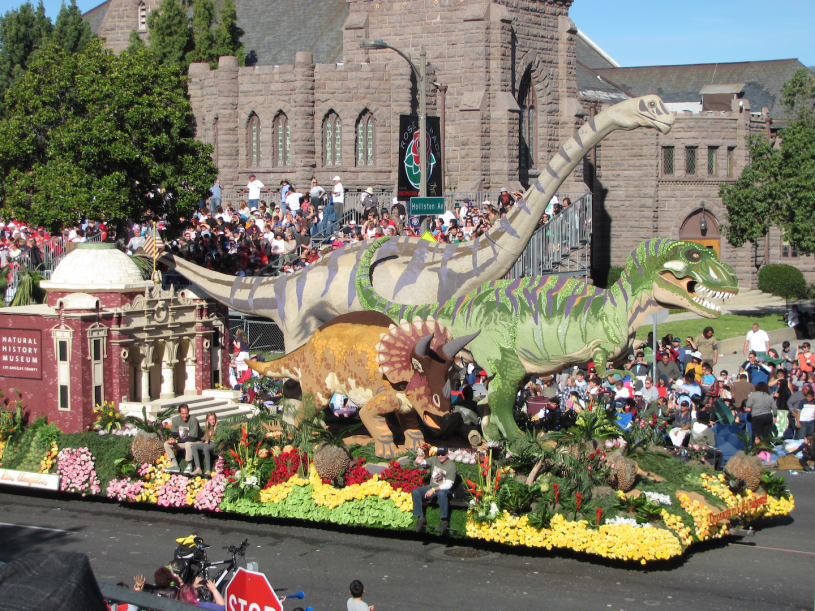
We might be a little biased, but it's hard to imagine anything topping these beauties: a Mamenchesaurus, Triceratops, and T. rex to mark the opening of NHM's Dinosaur Hall.
The Tournament of Roses is always growing in new directions, pushing the boundaries of what's possible to portray "in flowers"– saber-toothed cattails? Mammoths made of magnolias? With the Rose Parade, the New Year is always in bloom.
An especially Happy New Year and deep gratitude to the Seaver Center team (Betty Uyeda, Brent Riggs, and John Cahoon) for all of their help.